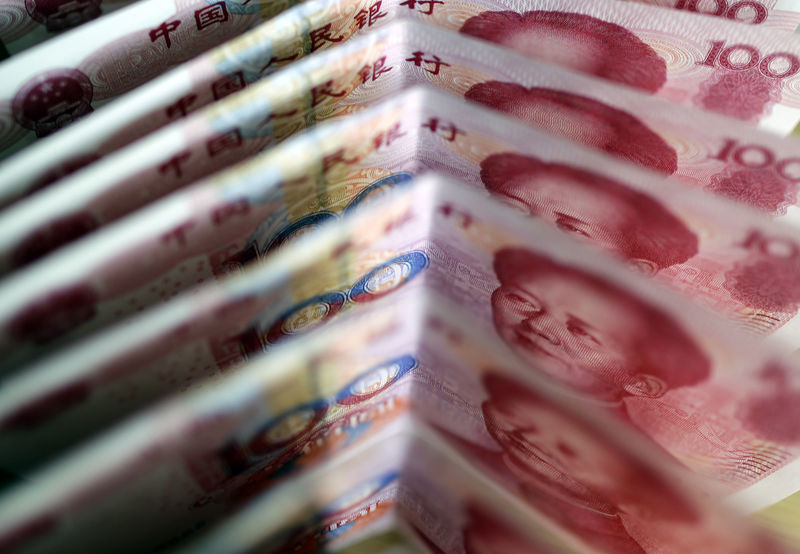(Bloomberg Opinion) -- In the zero-sum game of a currency war, politicians nudge their central banks to cut borrowing costs so as to push down the exchange rate. U.S. President Donald Trump wants more reductions from the Federal Reserve and a weaker dollar. China is showing him why such a strategy will be self-defeating.
On Monday, the yuan blew past 7 per dollar for the first time since 2008 and sank to a record low offshore in Hong Kong, even though the central bank has been conspicuously absent in the world’s race to zero interest rates. On the contrary, the People’s Bank of China has been talking about keeping home prices stable, a signal that policy makers won’t be easing. The 10-year yield spread between China and the U.S. has widened to 1.3%, the highest since January 2018. In theory, that should weaken the dollar – not the yuan.
A skeptic might say that the Chinese currency’s move on Monday wasn’t so usual. The yuan dropped less than South Korea’s won, which tumbled past 1,200 to the dollar, a level deemed sensitive by technocrats at that country’s central bank. The declines in both took place against a backdrop of broad strengthening by the greenback against emerging-markets currencies.
But I would read the yuan’s move using a little bit of political science. Unlike the won, which is more or less freely traded, China’s currency is still heavily managed. As I’ve written, the PBOC has many tools to kill yuan shorts if it wants to; issuing higher-yielding offshore notes, for instance.
In other words, the currency only depreciated beyond 7 because the PBOC allowed it, setting its fixing for onshore trading at weaker than 6.9 for the first time this year.
Beijing has joined a chorus of commentators in the West who are questioning whether President Trump is sincere and wants a trade deal with China at all, amid speculation he’s using the conflict to force the interest rate cuts he wants from the Fed. China will have to take “ necessary countermeasures” if Trump follows through with his threat to add extra tariffs on Chinese imports, the foreign ministry said last week.
Almost two years into the trade war, China has finally become smart. The country is flexing its muscles to show it can handle U.S. tariff pressure – and that it has many tools left to retaliate. Monday’s weaker yuan is a warning shot. If Trump imposes a 10% tariff on a further $300 billion of Chinese imports in December, Beijing just needs to open the lid on its capital controls a little wider. The yuan has a natural tendency to weaken anyhow.
China’s state-driven economic model has created many problems, as I’ve written. It also has strengths though – and policy coordination is among them. That was underlined Monday with the news that the government has asked state-owned enterprises to suspend imports of U.S. agricultural products, which Bloomberg News reported Monday citing people familiar with the situation.
Unlike the U.S., Beijing’s bureaucrats can knit together fiscal, monetary and foreign-policy measures into a coherent strategy. The tiger’s claws are coming out.
